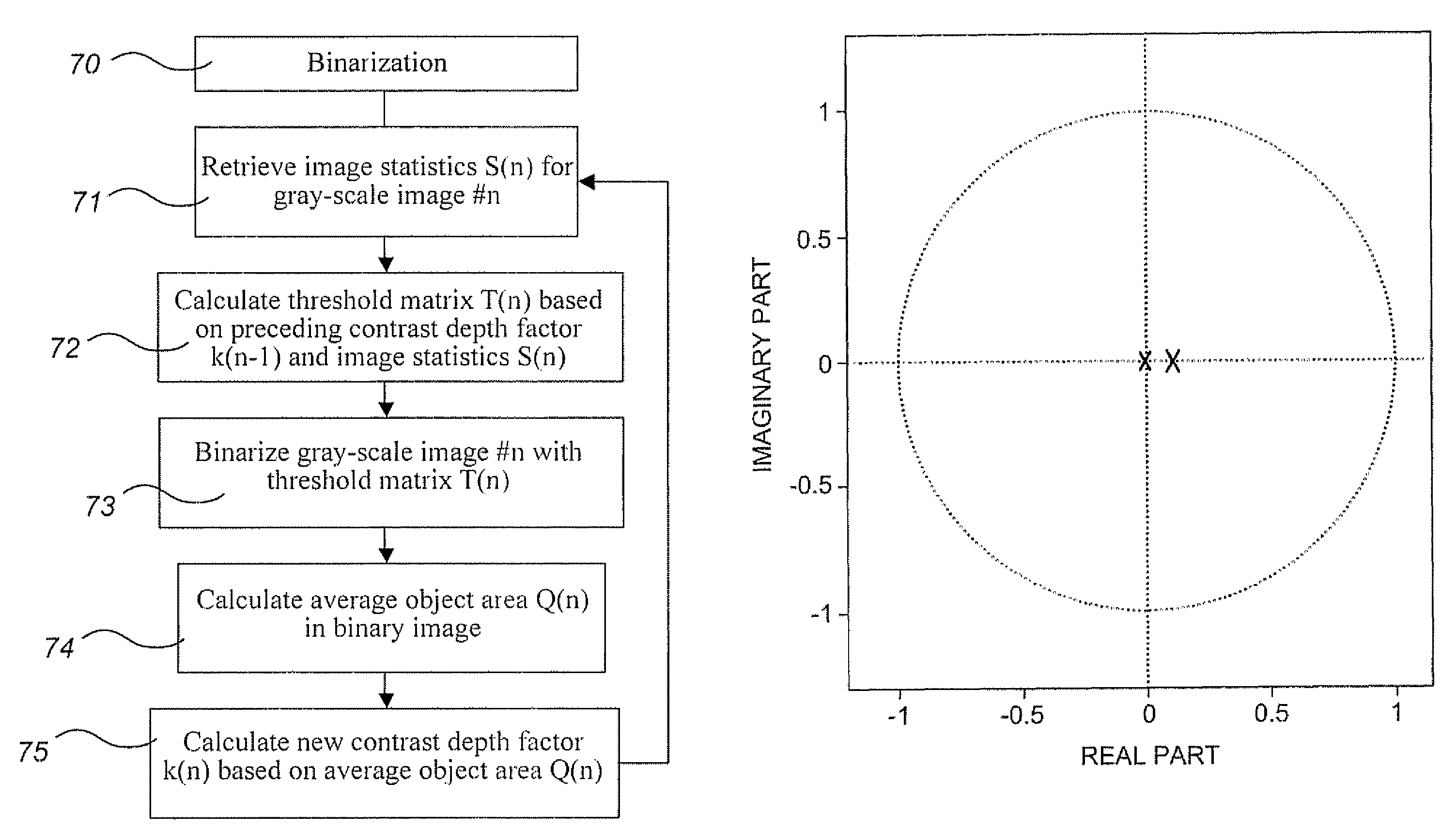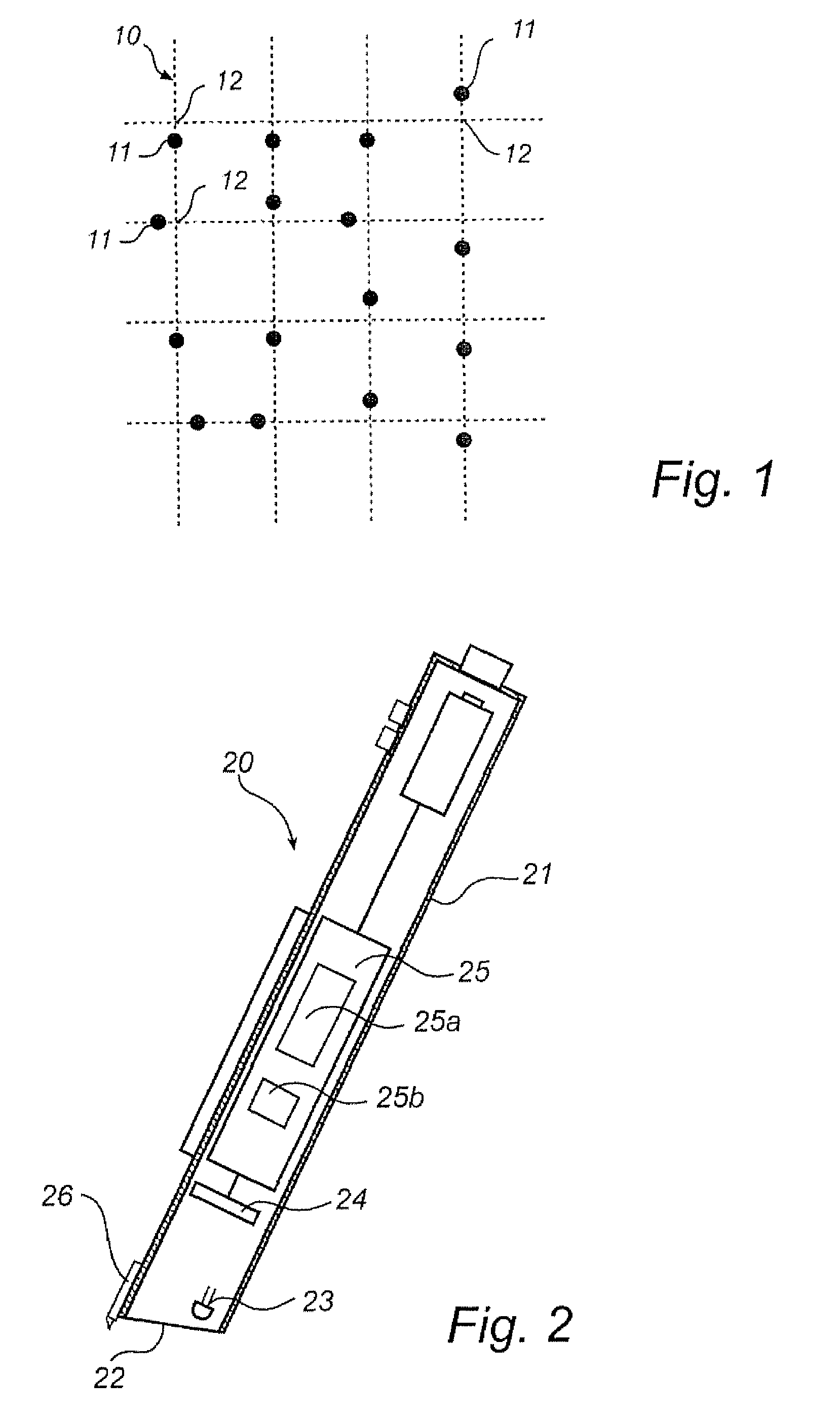Method and device for identifying objects in digital images
a technology of objects and digital images, applied in image enhancement, image analysis, instruments, etc., can solve the problems of high precision that cannot be achieved, the cost of relatively time-consuming and memory-intensive calculations, and the difficulty of combining the requirements of high precision in binarization with the requirements of rapid processing and small memory requirements, even in a specially-adapted data processing uni
- Summary
- Abstract
- Description
- Claims
- Application Information
AI Technical Summary
Benefits of technology
Problems solved by technology
Method used
Image
Examples
Embodiment Construction
[0045]The description below concerns position determination based on gray-scale images of a position-coding pattern. The position-coding pattern can be of any type, for example any one of the patterns mentioned by way of introduction In the following, however, the invention is illustrated in connection with the pattern which is described in the Applicant's International Patent Publications WO 01 / 16691 and WO 01 / 26033. This pattern is described briefly below with reference to FIG. 1.
[0046]The position-coding pattern comprises a virtual raster 10, which thus is neither visible to the human eye nor can be detected directly by a device which is to determine positions on the surface, and a plurality of marks 11, each of which, depending upon its position, represents one of four values “1” to “4”. The value of the mark 11 depends upon where it is placed in relation to its nominal position 12. The nominal position 12, which can also be called a raster point, is represented by the point of ...
PUM
 Login to View More
Login to View More Abstract
Description
Claims
Application Information
 Login to View More
Login to View More - R&D
- Intellectual Property
- Life Sciences
- Materials
- Tech Scout
- Unparalleled Data Quality
- Higher Quality Content
- 60% Fewer Hallucinations
Browse by: Latest US Patents, China's latest patents, Technical Efficacy Thesaurus, Application Domain, Technology Topic, Popular Technical Reports.
© 2025 PatSnap. All rights reserved.Legal|Privacy policy|Modern Slavery Act Transparency Statement|Sitemap|About US| Contact US: help@patsnap.com



